Species identification quiz
1/39
There's no tags or description
Looks like no tags are added yet.
Name | Mastery | Learn | Test | Matching | Spaced |
|---|
No study sessions yet.
40 Terms

Hordeum vulgare
Barley
Annual.
Grown on circa 1 million hectares in the UK
Winter and spring sown.
Stems are erect, stout, tufted. Height 60 to 120 cm tall.
Few leaves. Leaves arranged alternately. The upper leaf is close to the spike.
Sheath smooth and striate.
Large, smooth and sharp- pointed auricles which tend to clasp or overlap. The ligules are short and membrane-like.

Triticum aestivum
Wheat
Annual.
Grown on circa 2 million hectares in the UK.
In the UK mainly winter wheat sown Sep-Nov and harvested following Aug-Sep.
Small proportion spring sown.
Height up to 1m Auricles blunt and hairy.
Leaf-sheath and blade always hairy.
Leaf blades twist clockwise. Leaves thinner and narrower than barley
Spike type head with 2-row effect on zig-zag rachis.
Varying lengths of awns on lemmas and glumes depending on variety.

Avena sativa
Common oat
Annual
Winter and spring sown
1.5 meters high; culms tufted or solitary, erect or bent at the base, smooth.
The leaves are non- auriculate, green and the sheaths rounded on the back.
Ligules blunt and membranous.
Diffuse panicle.
Its lemmas are rarely awned.
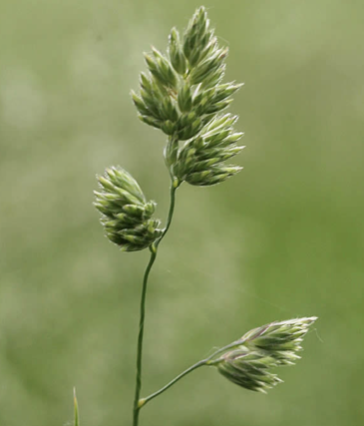
Dactylis glomerata
Cocksfoot
Perennial
Meadows and roadsides
Hay and grazing.
Food plant for caterpillars of Gatekeeper and Meadow brown butterflies. Favoured honeybee pollen source.
Inflorescence = triangulate flowerhead comprising several clumps of spikelets on branch ends. Glume is awned.
Tussock-forming.
Stem height 20-140cm, flattened stems.
Leaves grey-green 1.5cm wide.
Ligule 3-11mm membranous. Auricles absent.

Lolium perenne
Perennial rye grass
Perennial.
Can be grazed or cut for silage.
Commonly used in lawns.
Height up to 50cm.
Spikelets alternating up the axis, with only one glume except for the terminal spikelet which has two.
Nearly always lacks awns.
Spikelets typically have 8-11 florets.
Leaves up to 6 mm wide.
Ligule very short and squared-off, c 1 mm high
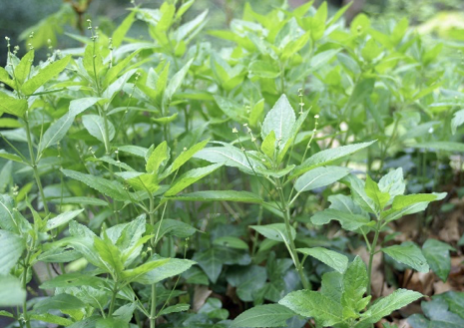
Mercurialis perennis
Dog’s mercury
Woodland specialist. Monoecious.
Oval, toothed leaves.
Small, green-cream male and female flowers on racemes.
Flowers Feb-April. Up to 35cm high.
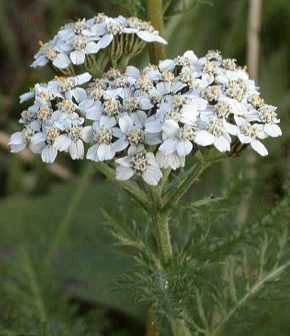
Achillea millefolium
Yarrow
Common habitats are verges, roadsides, hedgerows, grassland.
Leaves dark green, finely divided and feathery.
Flat-topped corymb of flower heads. Flowers 4-6mm across. Yellow centre-disc and pinky- white petals. June- November.
Up to 50cm high.
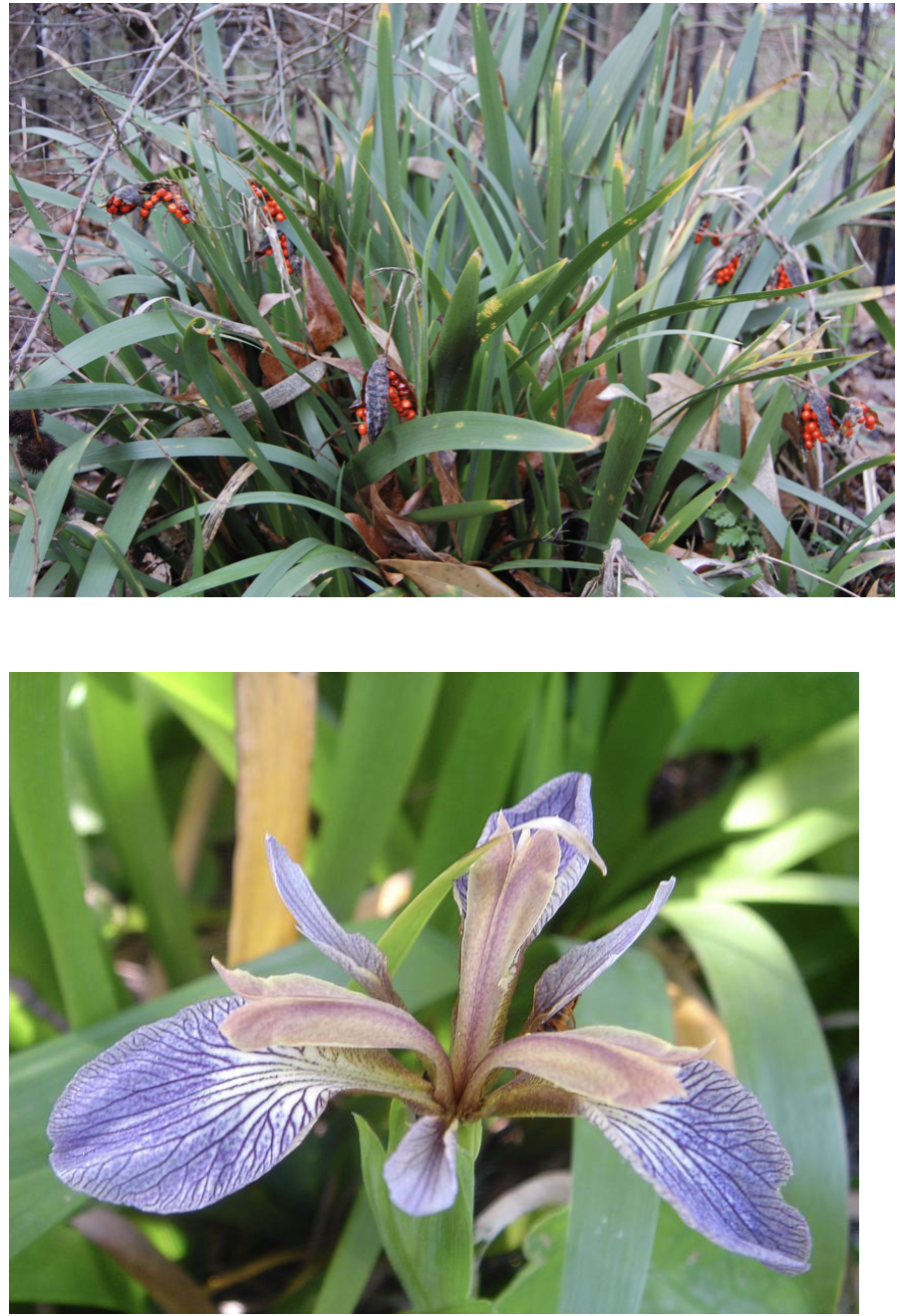
Iris foetidissima
Stinking iris
Habitat – wood, scrub, slightly shaded locations.
Calcareous soils.
Leaves linear up to 60cm high, parallel veins.
Flowers purple 70-80mm diameter in May-July.
Seed pods split along three lines to show bright orange berry-like seeds.
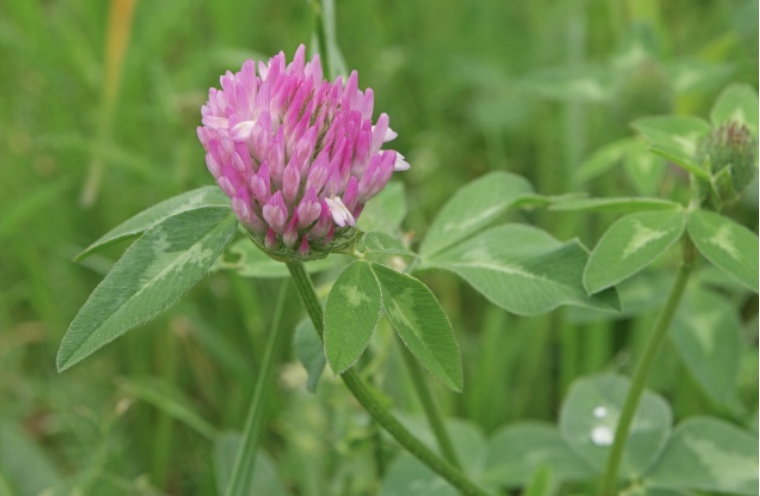
Trifolium pratense
Red clover
Grassland habitat, also widely planted as cover crop.
Leaves are trefoil in shape with a white-ish crescent shaped mark per leaflet.
Flower head is 10-15mm long and a pinky-purple colour.
Oblong ovoid fruit pod held within the flower, that opens to shed seeds.
Perennial, sometimes biennial.
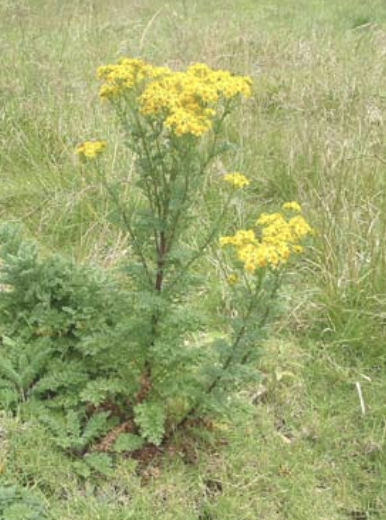
Jacobaea vulgaris
Common ragwort
Commonly found on roadsides verges and in grazed grasslands.
DEFRA (2011) Code of practice on how to prevent the spread of ragwort
Height up to c. 1m. Biennial or perennial.
Leaves pinnately divided, with blunt end lobe.
Flat-topped clusters of composite yellow flower heads each 15-25mm across June-Nov.
Synonym Senecio jacobaea is also often used.
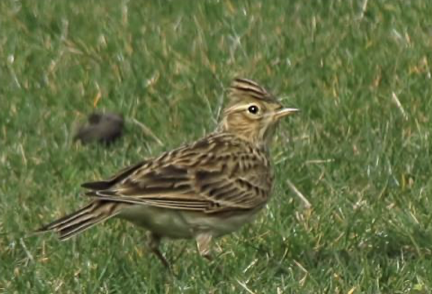
Alauda arvensis
Sky lark
Sound clip
Protected under Wildlife and Countryside Act (1981)
Plumage streaked sandy brown. White edge to wings visible in flight. Short crest.
Distinctive incessant musical song when in flight.
Open countryside habitat.
Feeds on seeds and insects.
lenght 18cm

Crex crex
Corn crake
Habitat loss through early cutting of grassland has caused UK population decline.
Video clip
Protected under Wildlife and Countryside Act (1981)
Migratory – UK May-Sep
Sandy brown plumage.
Hay meadow habitat.
Feeds on insects and seeds.
RSPB note that there are only 1100 breeding pairs in UK.
Length 27-30cm
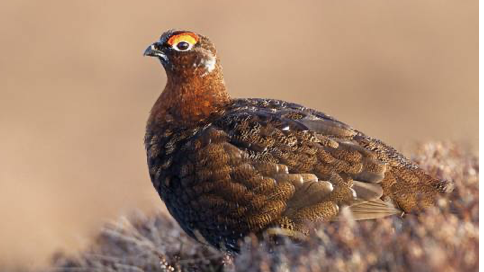
Lagopus lagopus subsp. scoticus Red grouse
Heather moorland habitat
Gamebird
Video clip link
Learn the subspecies name as part of the species name
Protected under Wildlife and Countryside Act (1981)
Male plumage chestnut brown with red wattle over eye.
Female grey-brown plumage. Well camouflaged.
Feeds on young heather shoots.
Length 37-42cm
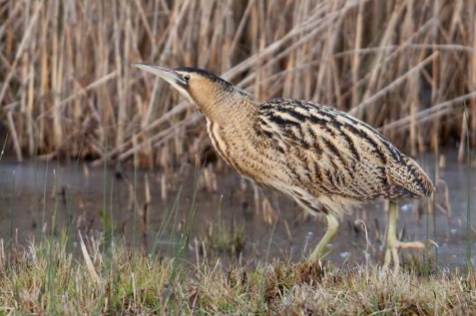
Botaurus stellaris
Bittern
UK BAP priority species Reedbed habitat.
Few breeding pairs left in UK
Video clip
Protected under Wildlife and Countryside Act (1981)
Streaked buff-brown plumage.
Distinctive booming male call dusk-night April-June.
Length 70-80cm.
Feeds on fish and amphibians, but sometimes small mammals.
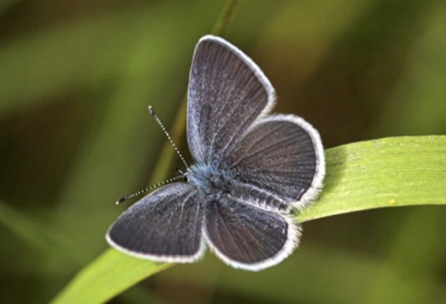
Cupido minimus
Small blue
Smallest resident butterfly in the Britain.
Protected under Wildlife and Countryside Act (1981) (for sale only)
Sole foodplant of caterpillar is Kidney Vetch (Anthyllis vulneraria) found on chalk grassland.
Upperwings brown with blue dusting. Undersides pales blue with row of black spots.
Wing Span Range (male to female) - 20-30mm

Bombus terrestris
Buff-tailed bumble bee
Largest bumblebee species in Britain.
Queens, workers and males have a dirty/ golden yellow collar near the head and one on the abdomen.
The queen’s tail is an off white/buff/ orange colour. The workers have a white tail with a subtle buff line separating the tail from the rest of the abdomen.
Males - buff-tinged tail.
Colony may contain up to 400 individuals.
Length up to 24mm
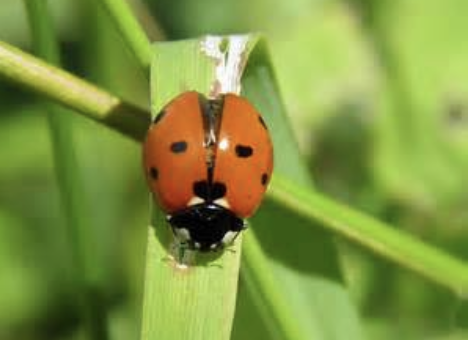
Coccinella septempunctata/ 7- punctata
7-spot ladybird
Common ladybird.
Valued as a natural predator of aphids and other crop pests.
Red wing cases with 7 black spots.
Native to UK but also migratory from the continent.
Main food source of aphids.
Active March-October. Hibernates in hollow stems over winter.
Length – up to 6mm.
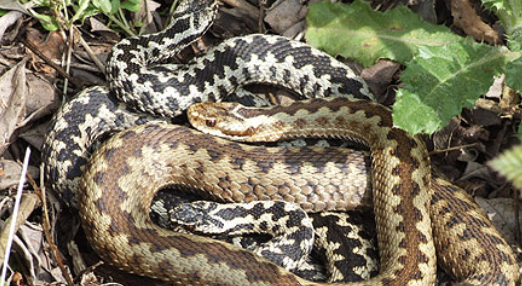
Vipera berus
Adder
Venomous.
Hibernates October to March.
Prefers heaths, moors, woodland habitats.
Feeds on lizards, small mammals, and ground-nesting birds.
Protected under Wildlife and Countryside Act (1981)
60-80cm long.
Males silver-grey, females light reddish- brown. Also black melanistic form.
Zigzag markings down back.
Red eyes with vertical pupil
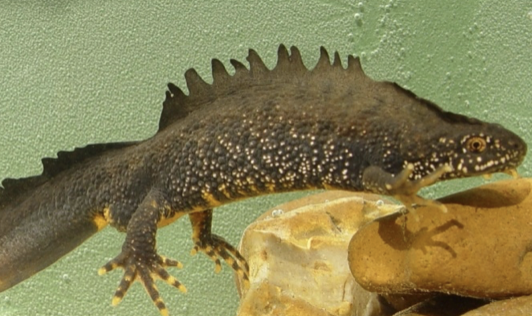
Triturus cristatus
Great-crested newt
Amphibian. Breeds in ponds and lakes in spring. May spend rest of year in water, woodland, hedgerows, tussocky grassland or marshes. Hibernates underground.
Protected under Wildlife and Countryside Act (1981)
Largest UK newt up to 17cm.
Dark grey in colour, spotted flanks, orange black-spotted belly.
Breeding male has ragged crest down back.
Female lacks the crest.

Salmo salar
Atlantic salmon
Much of adult life spent at sea.
Feeds on invertebrates and small fish.
Silvery colour with a few dark spots on the back.
Some mature males may develop a hooked lower jaw (kype) during mating season.
November to February - returns to clean, fast- flowing rivers in North and West British Isles to breed.
Spawns in shallow gravel beds. Young fish spend approx. 2-6 years in freshwater before migrating to sea.
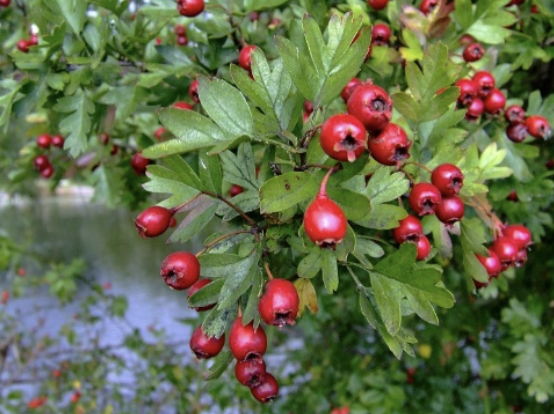
Crataegus monogyna
Hawthorn/ May/ Whitethorn
Bush or small tree.
-Leaves divided into 3-7 pairs of lobes.
- Lobes often subdivided into smaller, toothed, lobes.
- Flowers 5-petalled, white usually with only one style.
- Red berries in clusters.

Sambucus nigra
Elder
Habitat in woods, waste places, and hedgerows.
Height up to 10m
Compound leaves of 7-5 toothed leaflets. Leaflets arranged oppositely with a terminal leaflet.
Corymbs of fragrant white flowers in June- July. Each flower approx. 6mm across and the corymb 10-20cm across.
Black fruits ripen Aug- Sep, each fruit being approx. 6mm diameter.
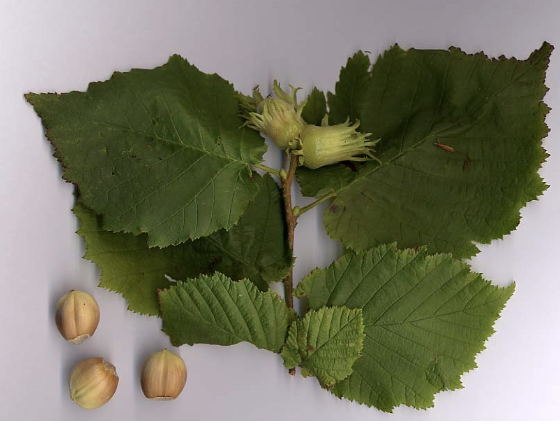
Corylus avellana
Hazel
- Bush or small tree 3-5m tall.
-Traditionally managed by coppicing.
- Female flowers, red, 3-4mm diameter. Male catkins 3-7 cm long.
- Leaves heart-shaped at base, doubly toothed. Leaves almost circular, with double- toothed margins. 10- toothed, with around 30 smaller teeth.
- Nuts 1.5 – 2cm long.

Hedera helix
Ivy
- Evergreen climbing shrub
- Leaves on flowering stems are simple, ovate. Leaves on climbing stems are 3 or 5-lobed
- Climbing stems have suckers.
- Flower diameter c 9mm. Clustered as umbel. Yellow-green heads.
- Black berries clustered as umbel.

Taxus baccata
Yew
- Dioecious – separate male and female plants.
- Shrub or tree - Evergreen
- Leaves dark green, flat and needle-like. Arranged spirally. 10-40mm long
- Pollen cones 3-6mm diameter.
- Seed cone is a single seed surrounded by a bright red aril.
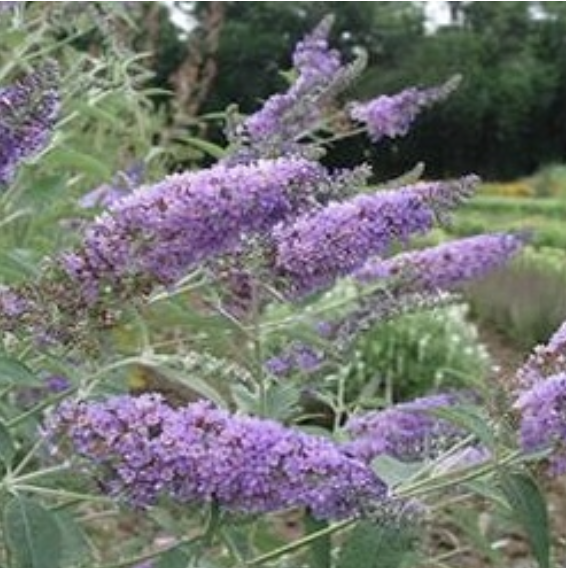
Buddleja davidii
Buddleia/ butterfly bush.
Geographical range: native to Tibet and China
Large shrub up to 4m
Naturalised on waste ground and around the coast.
Vigorous growth, dominant, opportunistic species.
Attracts insects and butterflies.
Spikes of purple, sometime pink or white, flowers gathered in dense and pointed inflorescences approximately 35cm long. Small, (10mm X 3mm) scented hermaphrodite flowers.
Flowers June- September.
Leaves: opposite, lanceolate, from 10 to 30cm length with slightly toothed edges, upper face dark green and shiny, lower face white with downy hairs.

Rhododendron ponticum
Rhododendron
Geographical range: native to Iberian peninsula, Bulgaria, Caucasus. Lebanon.
Large evergreen shrub up to 8m tall.
Naturalised and invasive particularly in woodland in Wales, Devon and Cornwall.
Flowers are pinkish- red and borne on stalks. With up to 15 flowers on a stalk c. 2.5cm long Flowers May-June.
Leaves - long-oval, 10-20cm long, 2-6cm wide (or larger in the wild); dark green above, paler and hairless beneath, leaf stem 1-3cm long;
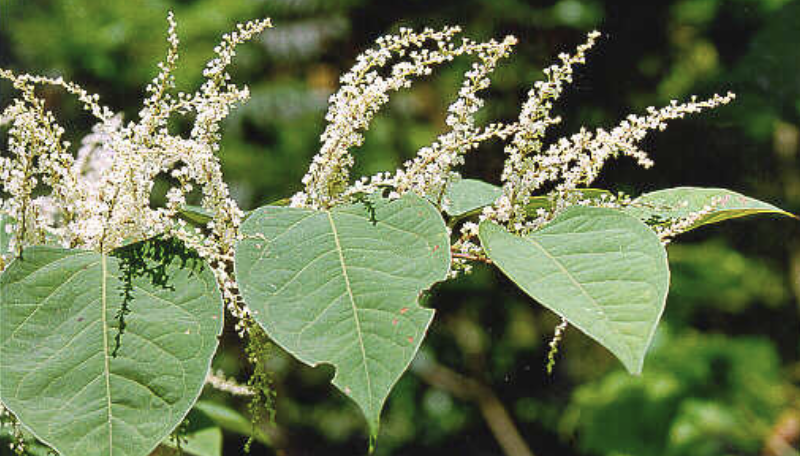
Reynoutria japonica
Japanese knotweed
Various changes of name!
Geographical range: native to far-eastern Russia, China, temperate South- East Asia, Japan.
Perennial species with spreading rhizomes and numerous reddish- brown, freely branched stems.
The plant can reach 2.5min height and forms dense thickets.
Difficult to eradicate.
Flowering occurs in late summer/autumn and consists of creamy white flowers.
Leaf size is usually about 15cm long by 8 -10cm wide, broadly oval to somewhat triangular and pointed at the tip
The rhizome may extend as deep as 3m and up to 7m away from the parent plant

Symphoricarpos albus
Snowberry
Geographical distribution: native to North America
Rhizomatous shrub, spreads through suckers.
Height up to 2m.
Flowers July-Sep. Pink 6mm long bell- shaped flowers in clusters.
Hermaphrodite flowers.
Mid-green leaves up to 7cm long, usually rounded or lobed.
Autumn round white berries, waxy in texture up to 1.5cm diameter.

Impatiens glandulifera
Himalayan balsam
Geographical distribution: native to North-East Pakistan and Nepal.
An annual plant growing up to 2m tall.
Common in riparian habitats.
Problems: destabilises river banks. Forms dense stands and competes with native species. Difficult to eradicate.
Flowers June-August, pinkish-purple 3-4 cm tall.
Leaves lanceolate, 5-23cm long.
Green fruits 5cm long which explode when ripe, scattering seeds up to 7 metres from the plant.
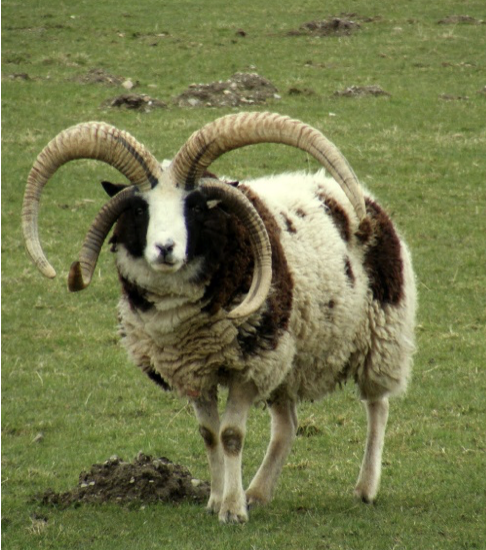
Ovis aries
Jacob’s sheep
Hardy lowland breed.
Wool products, rather than meat products.
Conservation grazing.
Grazes coarse and fine grasses, but not Tor- grass or dead grasses.
Browses shrubs and small trees.
Males and females are horned, usually one or two pairs, but can have up to six pairs.
Brown and white multi- coloured fleece.
Easy handling, aesthetically pleasing, placid temperament, tolerant of public and will protect itself against dogs.
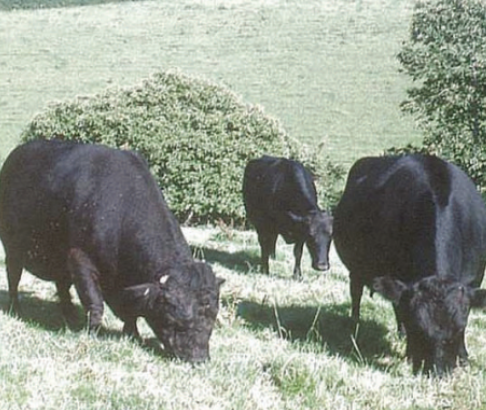
Bos taurus
Dexter cattle
Hardy breed, may overwinter outside.
Both meat and milk production.
Grazes a wide range of grasses. Suitable for conservation grazing.
Will also browse shrubs.
Small size – weight average 360kg.
May be black, red or dun coloured.
Docile temperament and easy to handle. Tolerates dogs and the public.
Horned (but often de- horned).
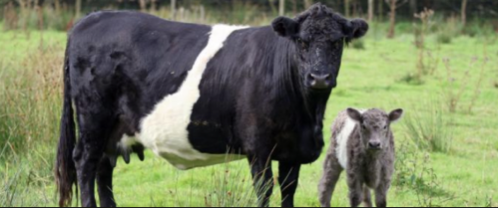
Bos taurus
Belted Galloway cattle
Hardy and adaptable to wide range of habitats. Winters out of doors.
A ‘minority breed’ classified by the Rare Breeds Survival Trust.
Meat production.
Non-selective grazer and browers, eating a wide range of grasses, herbs and shrubs. Conservation grazing.
Medium size – weight average 500-500kg.
Very tolerant to the public and dogs.
Broad white belt around black or dun body.
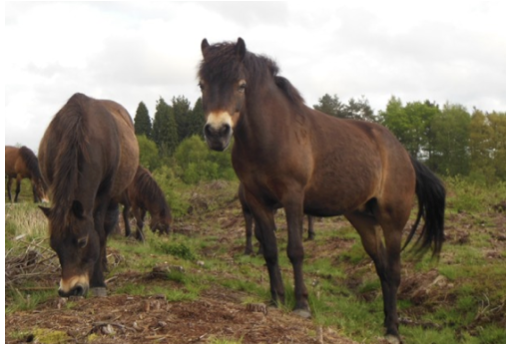
Equus ferus caballus
Exmoor pony
Hardy native breed.
Can overwinter outdoors with shelter.
Free-living herds on Exmoor not used to handling.
Others used for conservation grazing will be more used to handling.
Prefers to graze finer grasses, but will also consume coarse grasses, including rank Tor-grass. Consumes herbs. Limited browsing.
Will avoid the public.
Medium size, light to dark brown, pale around eyes.
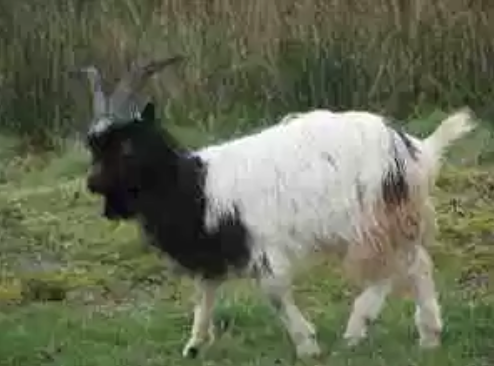
Capra aegagrus hircus
Bagot goat
Mainly used for conservation grazing.
Hardy lowland breed.
Little meat or milk commercial value.
Browse scrub in preference to grazing grass.
Small to medium size.
Males and females horned.
Long haired with black fore-quarters and white rear.
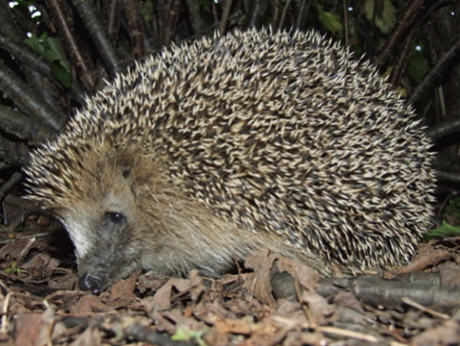
Erinaceus europaeus
Hedgehog
Native
Habitat rural or urban.
Protected under the Wildlife and Countryside Act (1981)
Head + body length 150-300mm
Lifespan up to 10 years, but most 2-3 years in the wild.
Nocturnal
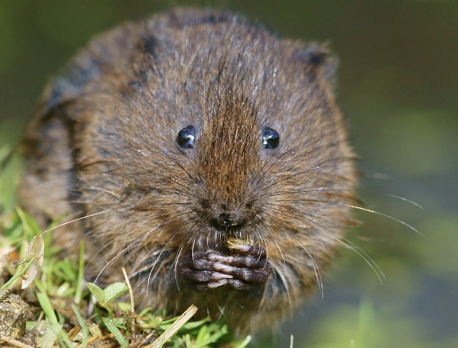
Arvicola amphibius
Water vole
Native
Swims at surface and under water. Burrows in riverbanks.
Protected under the Wildlife and Countryside Act (1981)
Head + body length 140-220mm
Lifespan 5 months
Scarce due to habitat loss and predation by mink

Muscardinus avellanarius
Dormouse
Native
Woodland habitat, especially hazel coppice.
Protected under the Wildlife and Countryside Act (1981)
Head + body length: 60-90mm
Lifespan 4 years.
Distinctive thick furry tail.
Paws turn sideways for climbing. Nocturnal.
Hibernates Oct-May.
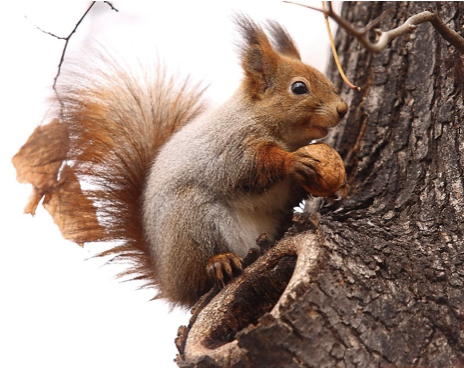
Sciurus vulgaris
Red squirrel
Native species.
Outcompeted by the introduced grey squirrel.
Protected under the Wildlife and Countryside Act (1981)
Head + body size:
180-240mm
Lifespan up to 6 years in the wild.
Orange-red fur and ear tufts.
Greater presence in Scotland, and on islands.
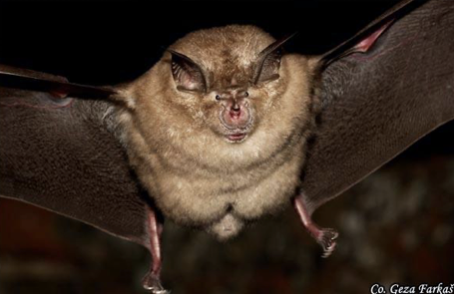
Rhinolophus ferrumequinum
Greater horseshoe bat
Native
Woodland habitats, also roosts and hibernates in caves and abandoned structures.
Protected under the Wildlife and Countryside Act (1981)
Wingspan 34-39cm
Horseshoe shaped ‘nose leaves’.
Head+ body length 57mm - 71mm
Wingspan 350mm - 400mm
SW England and S Wales range.